
Accurate SEO Rank Tracking – Its Importance & Our Guarantee
Creating a product or service that resolves a real need for potential customers is useless if you can’t get it in front of buyers. One way to do that is to rank high in search results when people are looking to buy what you’re selling.
This is achieved by properly conducting search engine optimization—high rank leads to a lot of people visiting your website some of which hopefully become paying customers. For well-rounded marketing efforts, SEO goes together with having an engaging social media presence and advertising your product in all the right places to all the right people.
But how to get there?
Is this where accurate SEO rank tracking comes into focus?
Obviously!
All your efforts are useless if you can’t properly track how your keywords rank in the SERPs and shift strategies mid-stride. That is the starting point for all your future marketing steps once you begin to rank.
Hence, if you are tracking your keyword rankings, you need a rank tracker with impeccable accuracy—one you can depend on.
Yes, there are ways to check the performance of your keywords manually (we will discuss this further in the post), but any such continuous effort would mean wasting precious time and resources on the task—especially if you have an established site with hundreds of pages that rank in any number of search engines.
That’s why you need a tool that can provide you with accurate data when you need it and in a way that’s easy to understand, a tool like SerpWatch.
Busting Rank Tracking Myths
Some marketers don’t believe in tracking keyword rankings. While this may be unimaginable for others, we were interested in finding out the reasoning behind it. We also wanted to provide reassurance that having the right tool at your disposal means you’ve found the perfect SERP tracker.
Now let’s bust some myths!
MYTH #1: Ranking Is Nothing More Than an Estimate
Some believe that there’s no good rank tracker and that SEO tools have lost all ability to gather accurate ranking information since Google introduced a slew of variables into its ranking algorithm. Those variables include device information, search history, location, and social signals, meaning that Google displays different SERPs depending on these factors combined.
For example, you won’t get the same results when you search for a term on a desktop, and when you do it on your cell phone, and you will get completely different results at home.
Consequently, this implies that site ranking information can’t be accurate because it pertains to each searcher individually. Additionally, the various data users get from rank trackers are nothing more than crude estimates.
However, this is an oversimplified view.
Google is indeed keeping an eye on what users are searching for. It sees which links they are clicking on, and what their friends are reacting to on social media. But that also enables Google to predict user behavior and show the most relevant results to each user based on the topics they follow, websites they prefer to visit, etc.
So it seems that focus is the key.
To be able to give relevant and accurate SERPs, it’s essential to know what the user wants. However, that’s impossible for a tool that crawls the entire internet like some of the all-in-one SEO platforms.
Why?
Well, this question deserves a threefold answer:
- It’s bound to miss an essential piece of information.
- It takes a long time to finish the task.
- By the time it’s done, the data may not be relevant anymore.
Conversely, an accurate rank tracker such as SerpWatch can mimic human behavior when it comes to search habits, and it looks for specific information you asked for—keyword position. Hence, the data it provides is supremely accurate, fresh, and always relevant.
Yes, the results will differ from one user to the next, but by being able to read complex search engine algorithms, SerpWatch is also able to filter out neutral results that any user would get by switching to incognito view.
This is what SerpWatch displays to users and what holds value—results unencumbered by searcher-specific valuables and as close as possible to the ones they are getting when performing the same action themselves.
MYTH #2: Rank Tracking Is Narrow-Minded
It is the opinion of some that monitoring position movements of a defined number of keywords prevents you from seeing the bigger picture. You have, for instance, decided you want your website to rank for a specified set of 50 keywords, but by looking only at them, you are overseeing all the others for which you might be ranking even better.
However, this is a human error in monitoring search engine ranking. A capable SEO professional will focus on the most relevant keywords to get to the buyer in the fastest way possible.
You want to get to people who are even a little bit interested in what you have to offer, right? By doing so, you won’t reach the people who are looking to buy a product different from the one you are trying to optimize for and sell.
A rank tracker that is accurate works the same way. It reacts to your needs and settings, and it doesn’t look at your website in a silo. It’s capable of offering a historical overview, as well as one about your competitors.
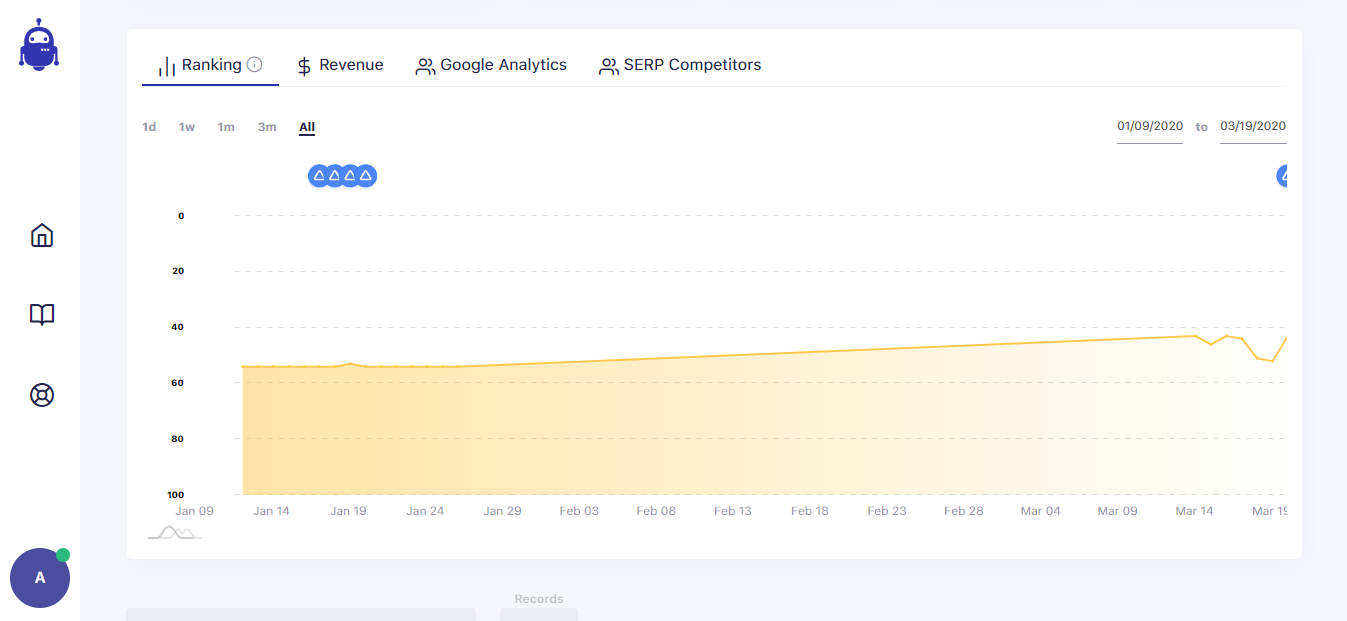
This kind of data representation allows for a complete 360-view of trends relevant to your website over time and in comparison to other entities on the market.
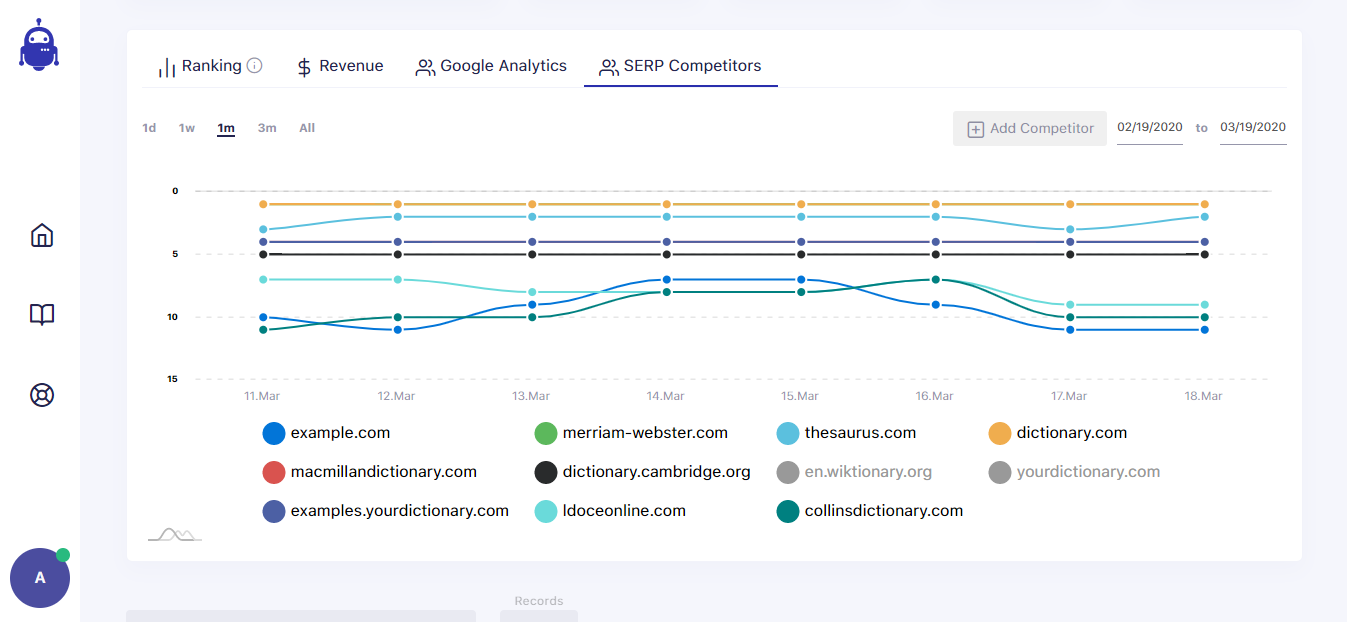
Granted, other tools like Google Analytics can provide additional information about your website traffic, but why use multiple tools when you can get the job done easily with only one?
SerpWatch offers that option as well, by integrating data from your Google Analytics into one easy-to-view graph. This makes it much easier to get all the ranking information in an easily digestible form and in one place.

MYTH #3: Monitoring SERPs Is Outdated
Another opinion is that marketers who are closely monitoring fluctuations of their keyword rankings are obsessed with only this one aspect of SEO, thus neglecting all others. Seeing that SERPs are always changing—and very quickly—it seems pointless losing sleep over it.
The argument is that SEOs should also work on delivering quality content, backlinks, and social signals. But we say that all these influence website ranking, and therefore cannot be viewed separately.
After all, developing high-quality content and backlinks are only some of the ranking factors necessary for reaching or staying on the first page of Google. Neither one is to be neglected if you want to achieve or keep certain positions for your relevant keywords.
However, to be sure of the effectiveness of your efforts, you ought to monitor your progress with the help of an accurate SERP checker.
That’s why viewing rank monitoring as an outdated activity is actually narrow-minded and, ultimately, incorrect.
Why Tracking Results Differ
Before deciding to buy a paid subscription to any resource, you need to review it thoroughly. When it comes to rank trackers, users tend to be concerned about the accuracy of the data they receive.
Some are more diligent than others and want to manually check the information displayed by the tool, which is when the problem arises. The result of their manual search can differ from the results provided by the rank tracker they use.
Why is that, you may ask?
There may be a few reasons.
Personalized Results
As we mentioned before, search engines—especially Google—have developed complex algorithms that allow them to predict and learn from user behavior and deliver relevant results accordingly. As time passes, Google improves the precision with which it serves results to its users.
This is exactly why the results you get when you type in a term in the Google search bar may differ from what your tracker displays. However, that doesn’t mean that you don’t get accurate SERPs from the ranking tool; it just means that its results are user-neutral.
Yes, you may cite certain tracking criteria for your keywords, like specifying the search engine you want to monitor, the type of device (desktop or mobile, or even both), as well as the region and language relevant to your business. However, while the ranking tool only considers these criteria when delivering results, Google adds your own personal preferences to the mix.
These slight differences in how Google processes your searches compared to your target audience are what is blurring your search results.
Checking Time Frame
Another reason for suspecting you have gotten inaccurate search results from your keyword tracking tool is the time frame within which you have performed the checkup. As SERPs tend to change—sometimes quickly, other times less so—you need to perform your check quite close to when the tool has updated the data for your keyword position.
This is actually where big players fall short of SerpWatch. The ranking results they provide are gathered on a weekly level, while more frequent checks are available in higher paid plans. Therefore, between the time you get a report about your rankings and check the results manually, a lot can happen.
It also means that relying on such website ranking information is foolish as it is outdated when you want to put it to use.
On the other hand, as a SEMrush alternative, SerpWatch offers much more frequent position checks—daily, every 12 hours, every 6 hours, every 2 hours, and on an hourly basis. This means that the data is significantly fresher than in any other similar tool, thus also being that much more relevant and actionable.
Data Misinterpretation
Not understanding keyword positions can also be a problem for accurate SEO rank tracking.
You’re thinking—how difficult can it be?! We can all count—one, two, three…
However, the problem lies in what you are counting.
As of January 22, 2020, it’s not as simple as only looking at links, i.e., organic results, placed on the first page of SERPs. Having rolled out a major global algorithm update, Google included featured snippets in SERP positions in order to deduplicate search results on the first page.

Before, you could appear once, twice, maybe three times on the first page via different search return types. Now, your keywords can only be displayed once. If you get into a featured snippet, you are no longer at position zero, but you have reached position #1. Yay, you!
So if you want a good rank tracker, you want SEO tools that have adjusted their algorithms to this very important change with varying speeds and success. Some are still having issues with correctly displaying SERPs to their users, but SerpWatch is not among them.
But for any of the users out there that have taken upon themselves to check ranking data in the meantime, their trackers not being up to date with algorithm updates or simply not knowing about them could have made them suspicious of information quality.
This is the difference dependable SEO tools make.
How to Test If Your Rank Tracker Is Accurate
Once you start suspecting that the data displayed in your SEO tools isn’t reliable, there is no going back—you have to check it. Here’s how you can do it.
- Find a reliable and easy-to-use VPN tool. It will allow you to simulate checking in from locations other than your real one to get the results as close to neutral as possible. If you are already using one, then you are all set. If not, you can try one of the many free ones out there.
- Go incognito. Open an incognito tab in your browser to eliminate your browsing history and cookies and get accurate SEO rank tracking results. Blocking add-ons and plug-ins in incognito mode is also a good idea.
- Run the search. Switch the location in your VPN tool to the one you are tracking your keywords in, and run the search in an incognito tab for the terms you want to check. If your tracker is dependable, it will show the same results (or at least a very slight deviation—a difference of a position or two) as the ones you got with the manual search. It should also show you the same SERPs, so if you have a keyword in a featured snippet, this is an excellent way to check. It is also a good indicator that you should find a better tracker if it displays incorrect SERPs for any of your keywords, especially those of high-value.
You Can Trust the Accuracy of SerpWatch Data
Keyword Rankings
One of the things that make SerpWatch better than other similar tools is its ability to provide accurate SEO rank tracking to all users continuously.
We took our own advice and checked the accuracy of our data the same way you can—via the incognito tab and a VPN tool.
We wanted to check how we rank for the keyword rank tracker on March 19, 2020. According to the SerpWatch tracker, our website is positioned at #16 (location: the United States; language: English).
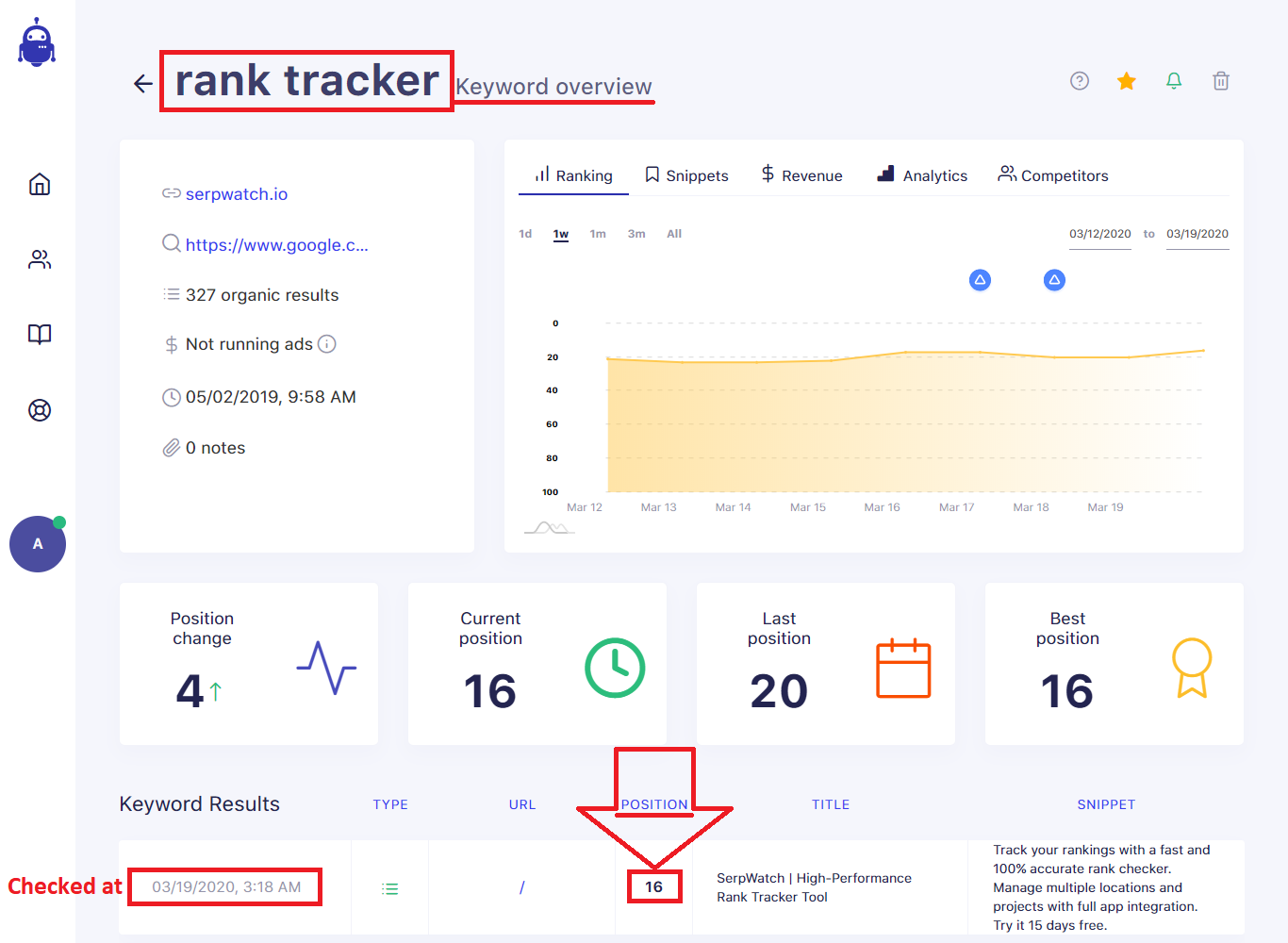
We then went incognito in our browser and ran a manual check via the paid VPN tool Windscribe, which showed the same result—position #16 in the US.
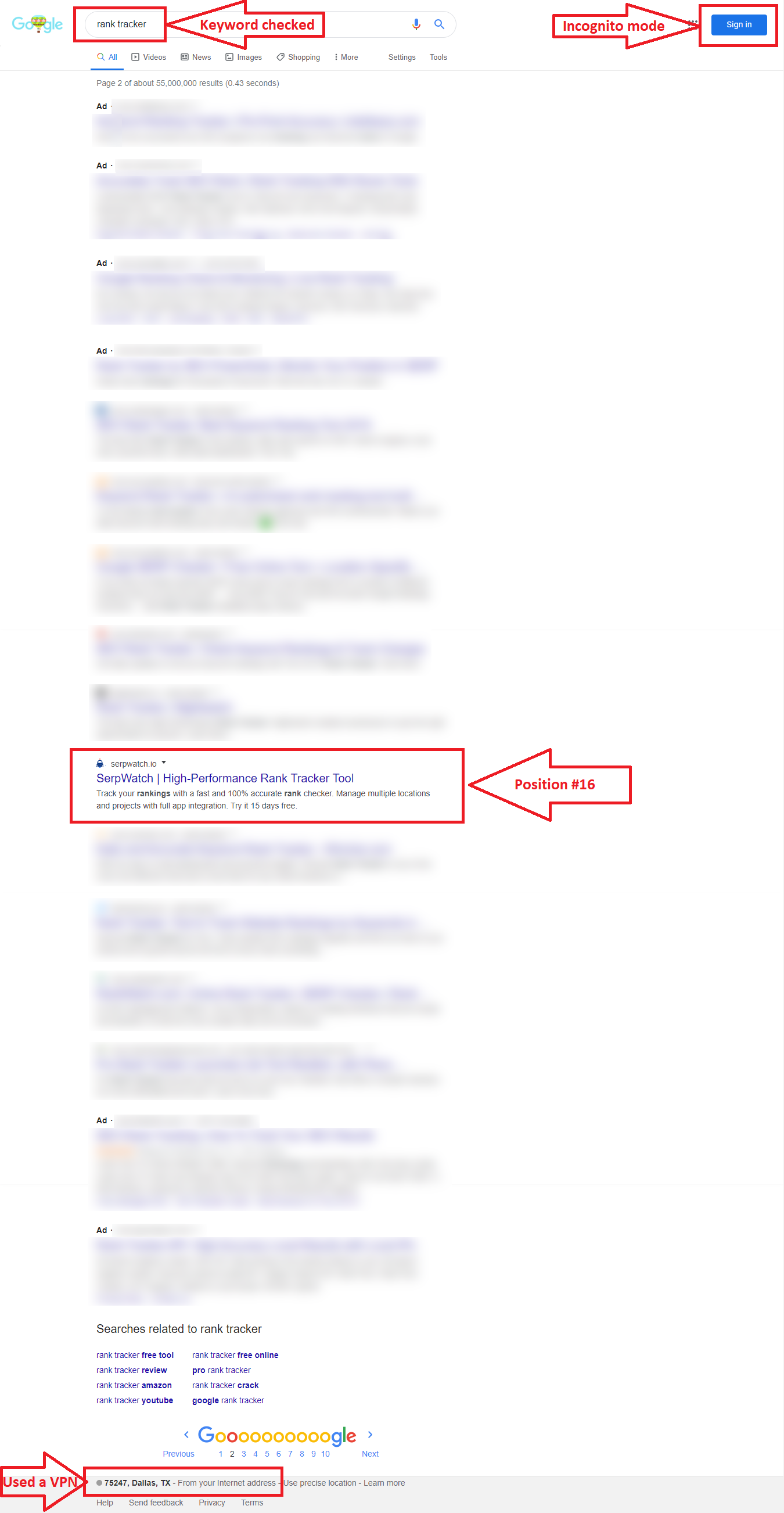
And then, to confirm it, we did the same thing with the first free VPN tool we found on Google—New IP Now. As expected, the result was identical to both the SerpWatch rank tracking data and the manual verification via the paid VPN—position #16 within the US.
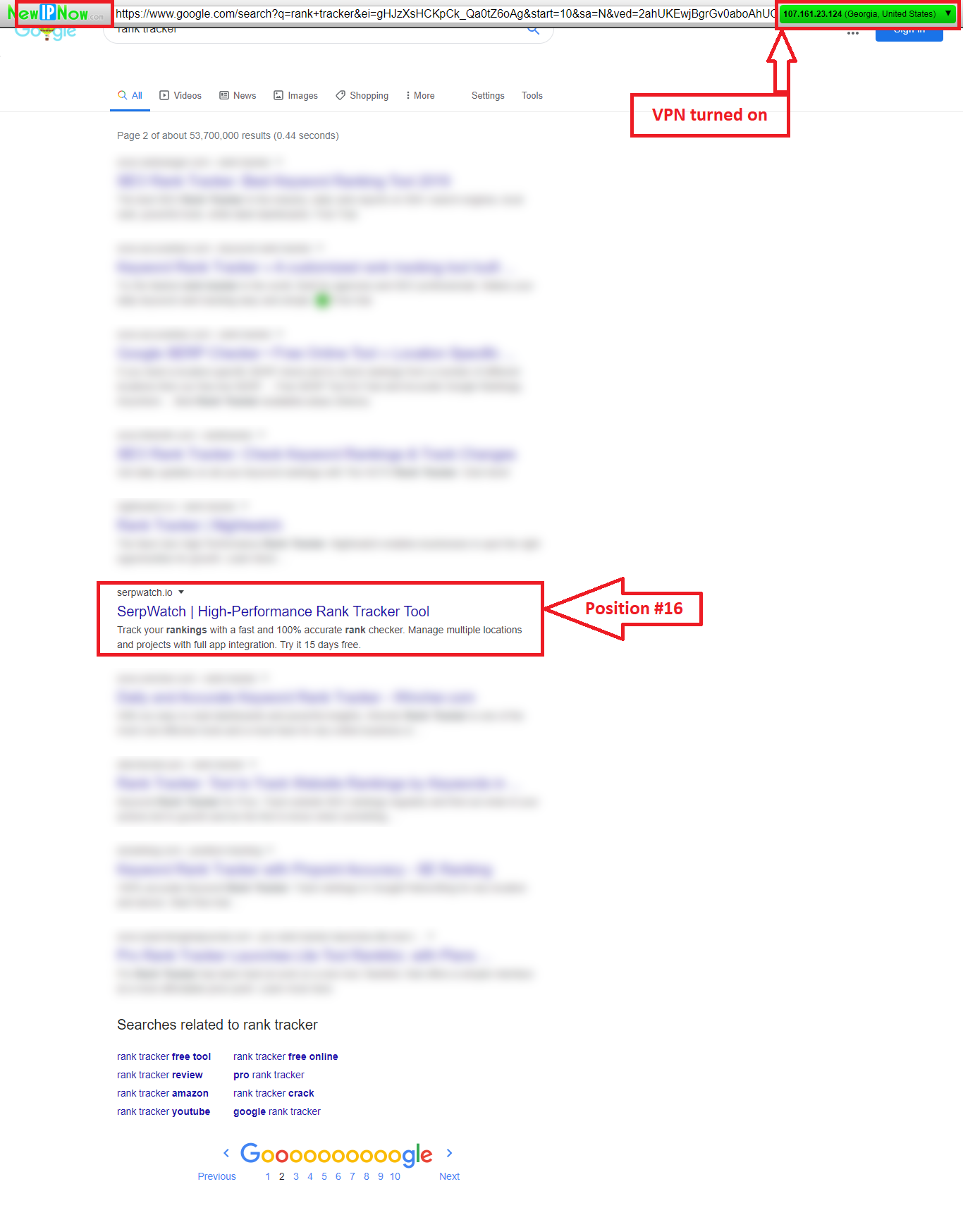
Ranking Screenshots
To help you get a better picture of your rankings, SerpWatch has also introduced position screenshots on the keyword level.
When surveying specific keyword information, the ranking chart displays not only daily positions where you can add personal notes, but also signals Google algorithm updates and provides screenshots of the Google search engine page results – impeccably accurate SERPs.
Whenever you hover over the ranking positions in the graph, you will be able to see all this info for each position. By clicking on the “Open screenshot” option, you gain easy access to the Google ranking results for that day.
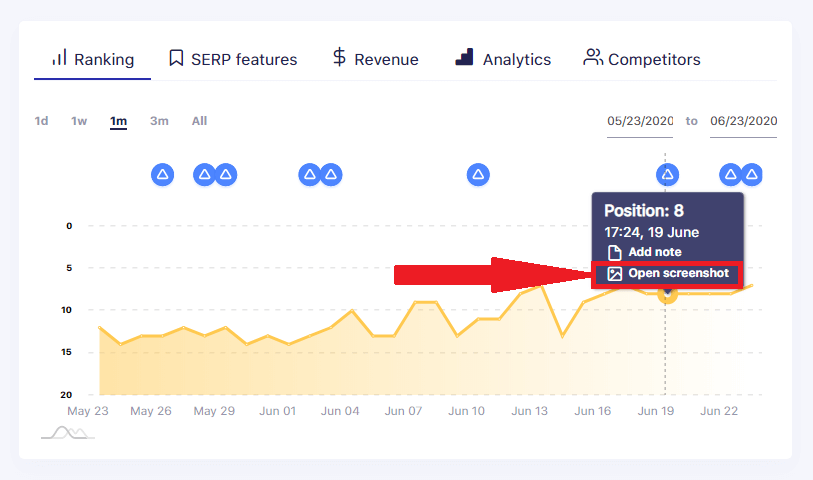
Screenshots will enable you to see your rankings in action instead of just having to digest plain numbers.
If you’ve entered the featured snippet section, you can see it right away. If your videos have ranked on the first page, you can see it right away. If you want to check where you are in regard to competitors, take a look right away.
This feature will make it easy to keep an eye on your marketing efforts with the most accurate SEO rank tracking information on the market.

The screenshots are available 10 days back, so you can check them over time if you need to closely monitor changes for any reason.
Accuracy Guaranteed by SerpWatch
So there you go, you can trust SerpWatch’s data. Here’s how we can say that with confidence.
The technology behind it speaks for itself. Having very specific tasks—checking the position of given keywords in a search engine (or more) and the language and location of the user’s choice—is what is ensuring that the task gets done quickly and without any distractions. So not only do SerpWatch algorithms scrape search engines for precise keyword ranking data, but they also finish it fast for the very same reason.
Thus, the data is up-to-date and relevant for the user every time it is delivered, which also makes it highly actionable. Having the right information at the right time allows you to perform corrections to your SEO strategy as ranking fluctuations happen.
Isn’t that why you are tracking the movements of your keywords in the first place?
If you’re in the market for an accurate rank tracker, you must check out SerpWatch. Sign up for a free 15-day trial or choose a subscription plan that suits your needs best to track, analyze, and manage your keywords successfully.




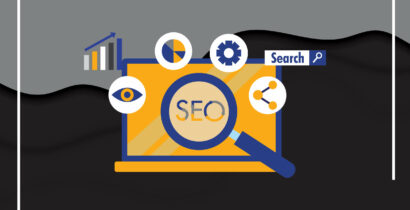

There are currently no comments.
Be the first!))